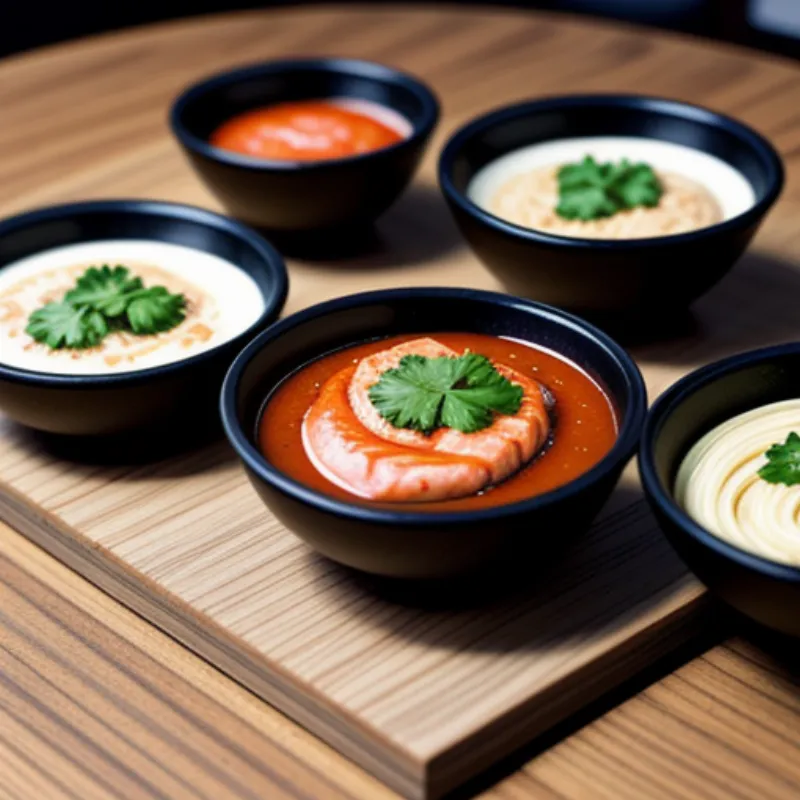Kabosu sauce. You might be thinking, “Kabosu what?” And that’s okay! While not as globally recognized as soy sauce or sriracha, kabosu sauce offers a uniquely tart and savory flavor profile that has taken the culinary world by storm. This Japanese citrus fruit, resembling a small, green lime, lends its bright, acidic juice to create a versatile condiment that’s equally at home drizzled over grilled fish, tossed with noodles, or used as a dipping sauce for dumplings.
Intrigued? I thought so! Let’s embark on a flavorful journey as we unlock the secrets to making your own kabosu sauce right in your kitchen.
Unlocking the Magic: Ingredients for Kabosu Sauce
Before we begin, let’s gather our key players. This recipe is all about balancing the intense tartness of kabosu with savory and umami notes, resulting in a flavor explosion that will leave you craving more.
Main Ingredients:
- Kabosu juice: The star of the show! You’ll need about ¼ cup of freshly squeezed kabosu juice. Look for plump, firm kabosu fruits at your local Japanese or Asian grocery store. Can’t find kabosu? No worries! You can substitute with a mixture of lime and lemon juice (3 parts lime to 1 part lemon) for a similar citrusy punch.
- Soy sauce: A classic for a reason! Opt for a good quality Japanese soy sauce like Kikkoman (about ¼ cup) for the best flavor.
- Mirin: This sweet rice wine adds a delicate sweetness and a touch of complexity. Use about 2 tablespoons for this recipe.
Enhancing the Flavor:
- Rice vinegar: Just a teaspoon adds a subtle tang and balances the sweetness.
- Sugar: A pinch (about ½ teaspoon) to round out the flavors. Adjust to your liking!
Optional Add-ins:
- Grated ginger: A small amount (about ½ teaspoon) adds a warm, peppery kick.
- Red pepper flakes: For those who like a touch of heat, add a pinch or two!
 Kabosu Sauce Ingredients
Kabosu Sauce Ingredients
Tools of the Trade: What You’ll Need
Making kabosu sauce is a breeze and requires minimal equipment:
- Juicer: For extracting the most juice from your kabosu fruits.
- Mixing bowl: A small to medium-sized bowl for combining the ingredients.
- Whisk: For thoroughly mixing the sauce and emulsifying the ingredients.
- Airtight container: For storing your homemade kabosu sauce.
Let’s Get Saucy: Step-by-Step Guide
- Juice the kabosu: Roll the kabosu fruits firmly on a cutting board to release their juices. Cut them in half and juice them using a citrus juicer. If you don’t have a juicer, you can squeeze the juice by hand, but be sure to strain out any seeds.
- Combine the ingredients: In your mixing bowl, combine the freshly squeezed kabosu juice, soy sauce, mirin, rice vinegar, and sugar.
- Whisk it good: Whisk the ingredients together until the sugar dissolves completely and the sauce is well combined.
- Taste and adjust: Now comes the fun part! Dip a spoon into your creation and give it a taste. Does it need a touch more sweetness? A hint of heat? Add your optional ingredients (grated ginger, red pepper flakes) gradually, tasting as you go, until you achieve your desired flavor profile.
Expert Tip from Chef Akira: “For a smoother, more mellow sauce, allow the mixture to rest for about 30 minutes before serving. This allows the flavors to meld beautifully.”
Presentation and Serving Suggestions
Now that you’ve created your own vibrant kabosu sauce, let’s explore the many ways to showcase its deliciousness:
- Drizzle it: Elevate your grilled fish, chicken, or tofu with a generous drizzle of kabosu sauce. The bright acidity cuts through the richness of the protein, adding a refreshing touch.
- Dip it: Kabosu sauce makes a fantastic dipping sauce for gyoza (Japanese dumplings), spring rolls, and even tempura vegetables.
- Toss it: Add a burst of flavor to your noodle dishes by tossing them with a splash of kabosu sauce. It pairs wonderfully with both cold and warm noodle salads.
- Marinade magic: Use kabosu sauce as a base for marinades for seafood or chicken. The acidity helps to tenderize the meat while infusing it with a tangy flavor.
Flavor Pairing Ideas:
- Grilled salmon with a side of steamed vegetables
- Chicken yakitori skewers
- Cold soba noodle salad with sesame seeds
- Pan-fried tofu with stir-fried vegetables
 Kabosu Sauce Serving Suggestions
Kabosu Sauce Serving Suggestions
Storing Your Kabosu Sauce
To keep your homemade kabosu sauce tasting its best, store it in an airtight container in the refrigerator for up to 1 week.
Conclusion
Congratulations on mastering the art of making kabosu sauce! This versatile condiment is sure to become a staple in your culinary repertoire. Its vibrant flavor and ease of preparation make it a winner for both weeknight dinners and special occasions.
Now it’s your turn! Grab your ingredients and embark on a flavor adventure. And don’t forget to share your culinary creations with us in the comments below. Happy cooking!
